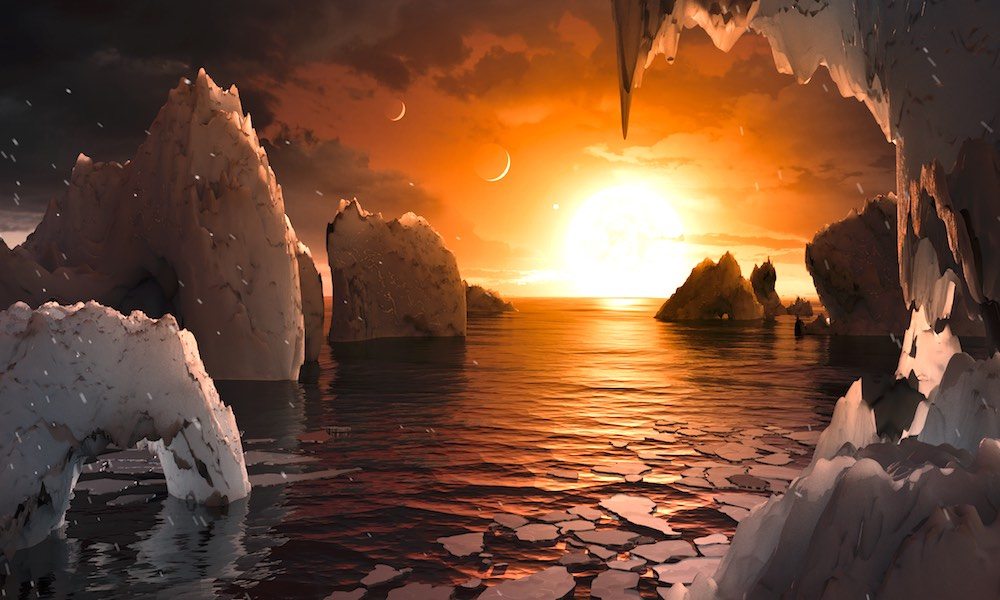NASA Discovers Seven Earth-like Planets 40 Light Years Away

Toggle Dark Mode
Astronomers have discovered seven Earth-size planets orbiting a star less than 40 light years away, NASA announced at a press conference in Washington, D.C. Wednesday.
The discovery was revealed by NASA’s Spitzer Space Telescope, and it’s the first known solar system of seven Earth-sized planets orbiting a single star. Of those seven planets, three are within the habitable, or “Goldilocks,” zone. In addition to the news conference, the researchers published their findings in Nature, a science journal.
“This discovery could be a significant piece in the puzzle of finding habitable environments, places that are conducive to life,” said Thomas Zurbuchen, a NASA associate administrator. “Answering the question ‘are we alone’ is a top science priority and finding so many planets like these for the first time in the habitable zone is a remarkable step forward toward that goal.”

The solar system, named TRAPPIST-1, is about 40 light-years — or 235 trillion miles — away from Earth. The system’s seven Earth-size planets orbit an ultra-cool dwarf star, and are located within the Aquarius constellation. The planets are thought to be terrestrial in nature, rather than gas giants like Jupiter or icy dwarf planets like Ceres. Notably, with the correct atmospheric conditions, all seven of the planets could potentially harbor surface water — although the chance of water is highest on the three planets in the Goldilocks zone, NASA announced.
In contrast to our own solar system, the planets are incredibly close to each other — all of them together occupy a space five times smaller than the distance between Mercury and the sun. On the surface of one of the planets, TRAPPIST-1’s ultra-cool dwarf would give off 200 times less light than our sun — but would appear much larger due to its closeness. Similarly, the other planets would appear as large as the moon because of their close proximity to each other.
In the next 10 years, scientists want to further investigate the system, including determining the atmosphere of each planet. Researchers will also search for liquid water, as well as signs of life, according to CNN. While, at 40 light-years, the solar system is still too far away for us to feasibly travel to, its relative closeness offers researchers one of the best opportunities to search for life beyond our own solar system.
The discovery is certainly an exciting one, and it could have profound implications for the science and technology fields. Additionally, as perhaps one of the best places to search for extraterrestrial life, TRAPPIST-1 could have an even broader impact on our society, even within our lifetimes.






